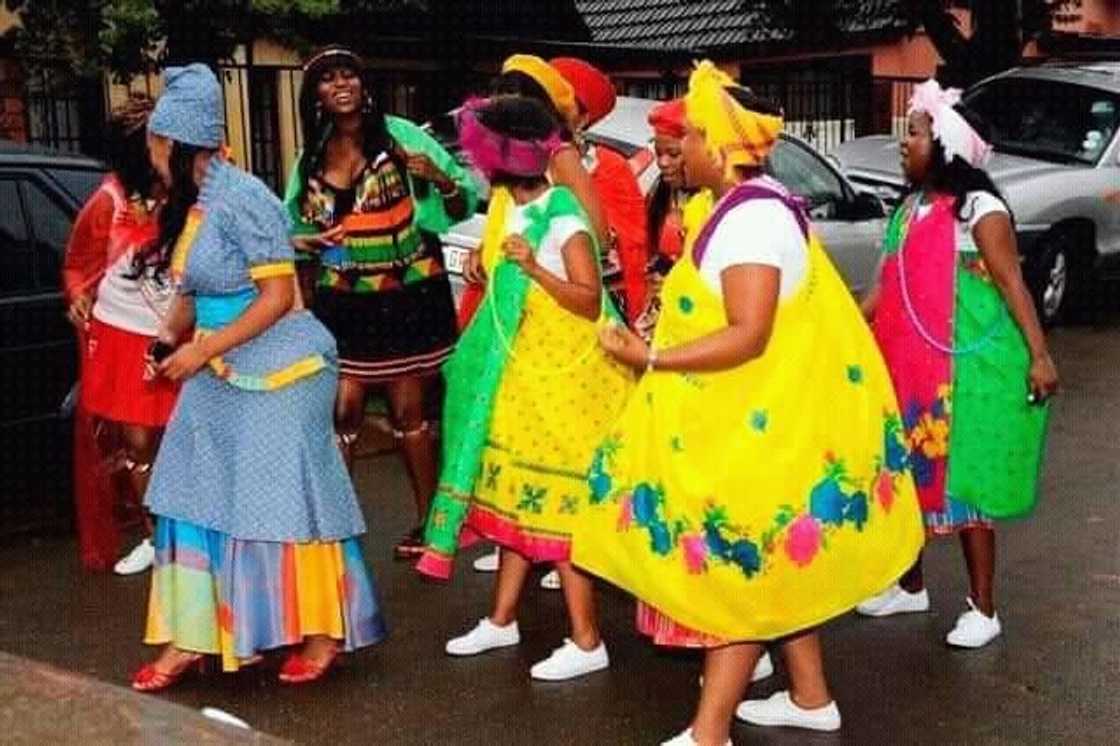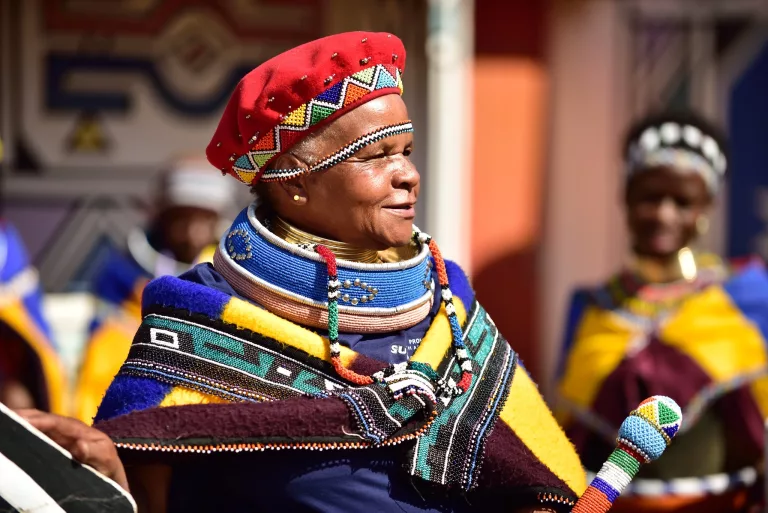Some Ideas on South African Culture Today You Should Know
Some Ideas on South African Culture Today You Should Know
Blog Article
The 6-Second Trick For South African Culture Today
Table of ContentsOur South African Culture Today IdeasRumored Buzz on South African Culture TodayThe Ultimate Guide To South African Culture TodaySouth African Culture Today Things To Know Before You BuyThe Definitive Guide for South African Culture TodayOur South African Culture Today Ideas
An issue of relevance in Zambian villages is the passing away of loved ones. All participants of the village put cash, time and effort together for the burial of the deceased.Throughout the mourning period; men remain outside your house and the ladies remain inside the home of the deceased. After discussing the departed, the village walks to the area of interment to claim their last goodbyes. Music and dance is a very important aspect of the Zambian culture. The various tribal units have their own dancing types; nevertheless, makishi is typical among all people.
The Best Strategy To Use For South African Culture Today
When it pertains to songs, drums are utilized one of the most, with a variety of drumming events. In Zambia, majority of individuals are Christian; Protestant and Roman Catholic. There are little teams of Muslims and Hindus, with the rest following neighborhood native tribal ideas.

South African heritage and culture is exceptionally varied, and consists of several teams of individuals that each have their very own practices and beliefs. Having such a diversity of people and cultures is what makes South Africa so one-of-a-kind. In the real feeling of the phrase, we are a rainbow country.
Making it the 7th on the list of countries with the most Portuguese people in it outside of Portugal. Portuguese is not just a culture, yet it is also a language and a race. Portuguese people stem from the country of Portugal in Europe, nonetheless, due to Portugal (like numerous various other nations in Europe) exploring the world and conquering various other nations throughout the 15th 20th centuries, South Africa has what we call Portuguese South African's living in it.
Excitement About South African Culture Today
Among the noticeable attributes of the topography is a plateau that covers practically 2 thirds of the facility of the country. The plateau complicated rises towards the southeast, where it culminates in the Drakensberg array, component of an escarpment that divides the plateau from the coastal locations. The Drakensburg consists of Champagne Castle, the highest peak in the nation.
The region north of the Witwatersrand, called the bushveld, inclines downward from east to west towards the Limpopo River, which creates the global boundary. The western area of the plateau, the middleveld, also comes down towards the west and varies in altitude between the highveld and bushveld. Between the Drakensburg and the eastern and southerly coastline, the land comes down to the sea.
Nearer the shore there is a low-lying plain called the eastern lowveld. Southwest of the plateau the country comes to be progressively a lot more dry, paving the way to the stony desert of the Great Karroo, approached the eastern by the lower, better sprinkled plateau of the Little Karroo. Dividing the completely dry southern inside from the sandy littoral of the southerly coast and West Cape is another variety, the Langeberg.
Not known Details About South African Culture Today
The country's racially, ethnically, and politically separated background has actually generated nationwide and subnational icons that still operate as icons of the nation, and others icons that are approved just by specific teams. The monoliths to white inhabitant conquest and political supremacy, such as the Afrikaner Voortrekker ("pioneer") Monolith in Pretoria and the Rhodes Monolith recognizing the British click now colonial realm contractor and Cape head of state Cecil Rhodes, remain sectarian icons.
The initial modern citizens were the San ("bushman") hunter-gatherers and the Khoi ("Hottentot") individuals, who rounded up animals (South African culture today). The San may have been present for countless years and left evidence of their visibility in hundreds of ancient cavern paintings ("rock art"). Bantu-speaking clans that were the ancestors of the Nguni (today's amaZulu, amaXhosa, amaSwazi, and vaTsonga individuals) and Tswana-Sotho language groups (today's Batswana and Southern and Northern Basotho) migrated below east Africa as very early as the fifteenth century

Both former republics of the Orange Free State and Transvaal (South African Republic) were established by Afrikaner inhabitants that defeated and dispossessed the Basotho and Batswana. Lesotho would certainly have been by force incorporated right into the Orange Free State without the extension of British security in 1869. The ultimate unification of the nation arised from the South African Battle (18991902) between the British and both Afrikaner republics, which reduced the nation web link to mess up at the start of the twentieth century.
Afrikaners historically considered themselves the only real South Africans and, while granting full citizenship to all citizens of European descent, refuted that status to individuals of shade till the democratic transition of 1994. British South Africans keep a feeling of cultural and social connection to Great Britain without damaging their identity as South Africans.
Our South African Culture Today Statements
The diversity and fragmentation within ethnic groups and the equilibrium of stress in between those teams during the twentieth century stopped interethnic civil dispute. While intergroup tensions over resources, entitlements, and political prominence continue to be, those problems are as likely to match Zulu against Zulu as Zulu against Xhosa or African versus Afrikaner.
From colonial India, British sellers and managers brought the curved metal decorative roof coverings and slim lace work columns that still represent the verandas of homes in communities and cities throughout the nation. Holy places add an essential architectural facet also in the smallest communities. In enhancement to the soaring steeples and classic stonework of Afrikaans Dutch Reformed churches, Anglican churches, synagogues, mosques, and Hindu temples offer variety to the religious building scene.

Butchering and the brewing of traditional cereal beer are essential in protecting the engagement and a good reputation of the forefathers who are thought about the guardians of good luck, success, and health. Indian communities preserve their indigenous cooking traditions and apply them on Islamic and Hindu routine and ritualistic celebrations. Afrikaners and Coloured people gather at weekends and unique celebrations at multifamily barbecues called braais, where community bonds are enhanced.
Due to the fact that this was the primary economic venture of both black Africans and white homesteaders, problem between those groups fixated the belongings of grazing land and animals. In 1867, the largest ruby down payments in the globe were discovered at Kimberley in the west central area. The wealth from those fields helped fund the exploitation of the biggest gold coral reef worldwide, which was discovered on the Witwatersrand in 1886.
The 6-Minute Rule for South African Culture Today
This resulted in misconceptions and calculated misrepresentation in the ventures of white inhabitants and federal government authorities with African chiefs during the early american duration (South African culture today). In the facility of African gets, some facets of public and mainly "tribal count on" land period were maintained, and even in white backwoods, forms of public tenure were still practiced in locations with African areas
After the autonomous makeover of 1994, programs for land restitution, redistribution, and reform were set up, but development has been slow. The white minority still click now manages eighty percent of the land. Following farming land intrusions in Zimbabwe, the Department of Land Affairs has promised to speed up land redistribution.
Report this page